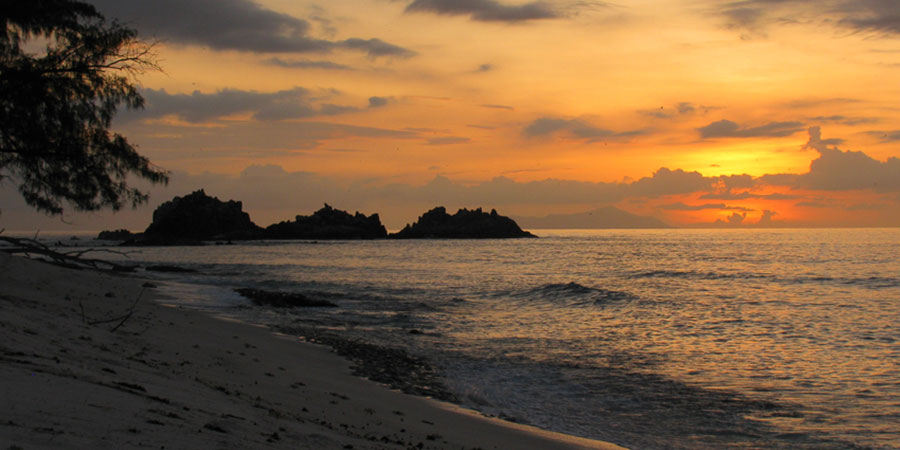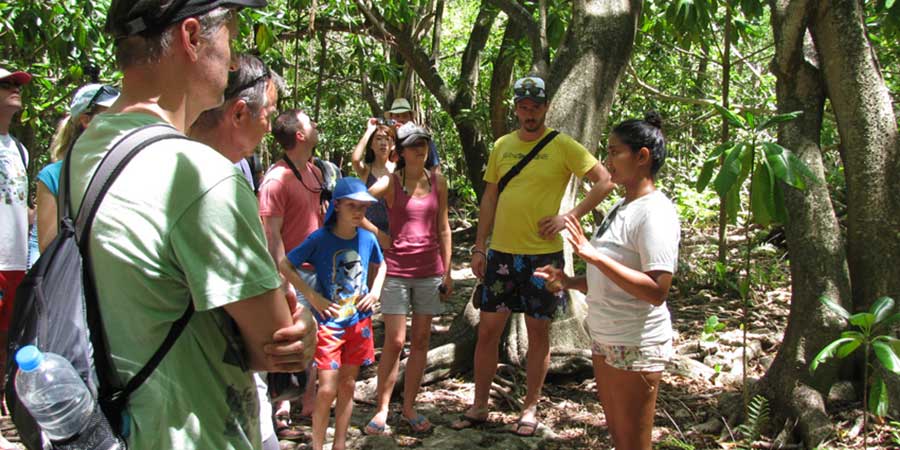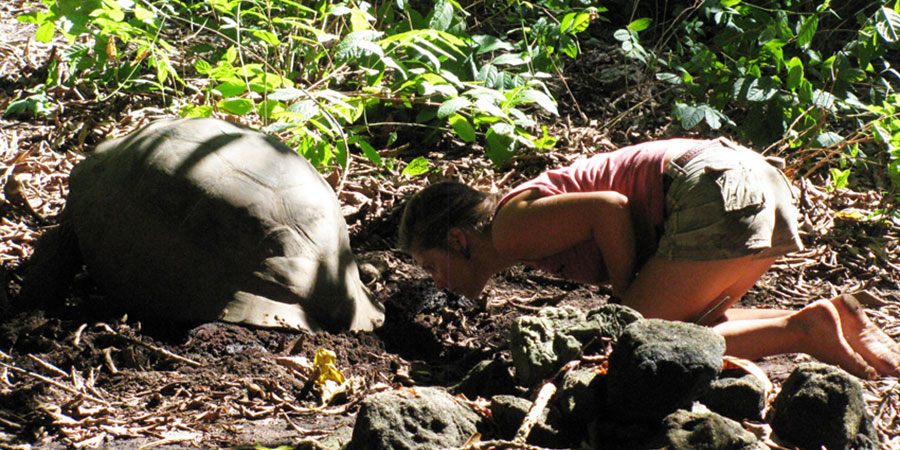
I was prepared, in terms of equipment at least, for the trials of tropical island life on Cousin Island Special Reserve. Coming from the western part of Scotland, mosquito nets, sun cream, and turtle ID charts are usually not part of my packing list. But having read what to expect, I was ready!
You immediately smell the life on the island, there’s a unique pong to all large seabird colonies, and Cousin Island is no exception. There are multiple birds in every tree, nesting and resting, squawking and preening. This wasn’t even peak seabird season, I was missing several thousand pairs of noddies.
There are ghost crabs scuttling about your feet, racing in and out with each wave, or hunkering down and seemingly resigning themselves to a battering from the water. And as you make your way from the beach to the research centre, there’s skinks in every corner you look, peering at you with a quizzical sidelong stare for a few moments before deciding you’re not edible and racing away with a scuttling of claws.

The aim of my visit is to gather information to help me review and renew the management plan for Cousin. It’s not a job to take lightly, Cousin Island Special Reserve has a long and truly successful history in conservation; with the work that has been done to restore the island from a coconut palm plantation back to its original form, alongside research, translocation and protection work, the fortunes of several species have been turned around right when they were on the cusp of extinction. The management plan lays out the objectives for the reserve and steers the work programme over a 5 year period. So no pressure!
I happened to arrive on the same day as 2 new Conservation Boot Camp participants, there for a month, so I also benefitted from their orientation process. The preparation I did for the mosquitoes was unnecessary, there was no deluge of biting bugs, in fact, because there had been no rain for about a month, mosquitoes were absent. My sleeping net stayed in my pack.
Every day on the island brought something new. I was lucky enough to witness an Giant Aldabra Tortoise laying eggs, the first time it had been seen in over 5 years. Like turtles, they seem to be so intent on their business, they go into a trance like state, enabling researchers to approach them, cautiously, without disturbing them. This tortoise spent 6 hours diligently covering over her precious nest with dirt!

The Seychelles magpie robin, a bird full of character, is one of the conservation success stories of Cousin, going from just 12 individuals in the 60’s to an increasing population of about 300 after conservation efforts. They follow the tortoises around like pageboys, eating the insects that the tortoises uncover as they disturb the undergrowth. After spending just a little time shuffling through the forests, they started following me too.
I left Cousin on a stormy day, the beginning of the rainy season. It means the team will not have to be so careful at rationing water supplies. But it does mean the mosquitoes are coming. I was sad to leave the island, there’s so much more to explore, and the work is never done, with the turtle patrols taking up most of the day, it was difficult to fit in invasive vegetation control and species monitoring efforts. I’ll be able to finish the management plan with what I have learned, but will have to return to Cousin Island to get my wildlife paradise fix before returning to the cold depths of the Scottish winter.
Crystal Maw – Site manager for RSPB Scotland

